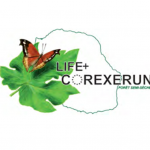
Fostering research excellence
in EU Outermost Regions


Fostering research excellence
in EU Outermost Regions
Published 13.12.2019

La Reunion
The COREXERUN project aimed to ensure the ecological viability of semi-xerophilous habitats in La Reunion.
Abstract of the project:
La Reunion is one of the world’s top 25 hotspots for biodiversity. Scattered on the western part of the island, its semi-xerophilous forest habitats are especially precious. Although they have completely disappeared in other places of the Mascarenes, in La Reunion relics are estimated to cover just 1% of their original area of 56 800 ha. These last relics, however, are subject to high natural and human threats, and are only present today in a degraded form and in inaccessible areas, such as gullies and cliffs. The Massif de la Montagne, which contains around 255 ha of more or less substandard semi-xerophilous habitat, provides an important example of this type of vegetation in La Reunion. Today, the main threat is the rapid and uncontrolled growth of exotic and invasive species.
The COREXERUN project aimed to ensure the ecological viability of semi-xerophilous habitats in La Reunion. Specifically, it aimed to:
-Restore and preserve around 30 ha of domestic relic habitat that are subject to high anthropic and natural pressures, in order to ensure their ecological functionality;
-Artificially reconstitute the functioning of 9 ha of semi-xerophilous habitats on a small plateau between two gullies and resting on existing relics in order to potentially to restore an ecological corridor;
-Combat the erosion of biodiversity by preserving the unique species sheltered by these habitats through the reintroduction of populations of rare flora species, especially protected species that are close to extinction, while avoiding the risk of genetic pollution;
-Define innovative protocols for the restoration and the reconstitution of semi-xerophilous habitats in La Reunion, which can be transferred to similar areas;
-Acquire greater knowledge of the semi-xerophilous habitats; and
– Exchange experiences and raise awareness of the need to protect biodiversity, especially this type of habitat.